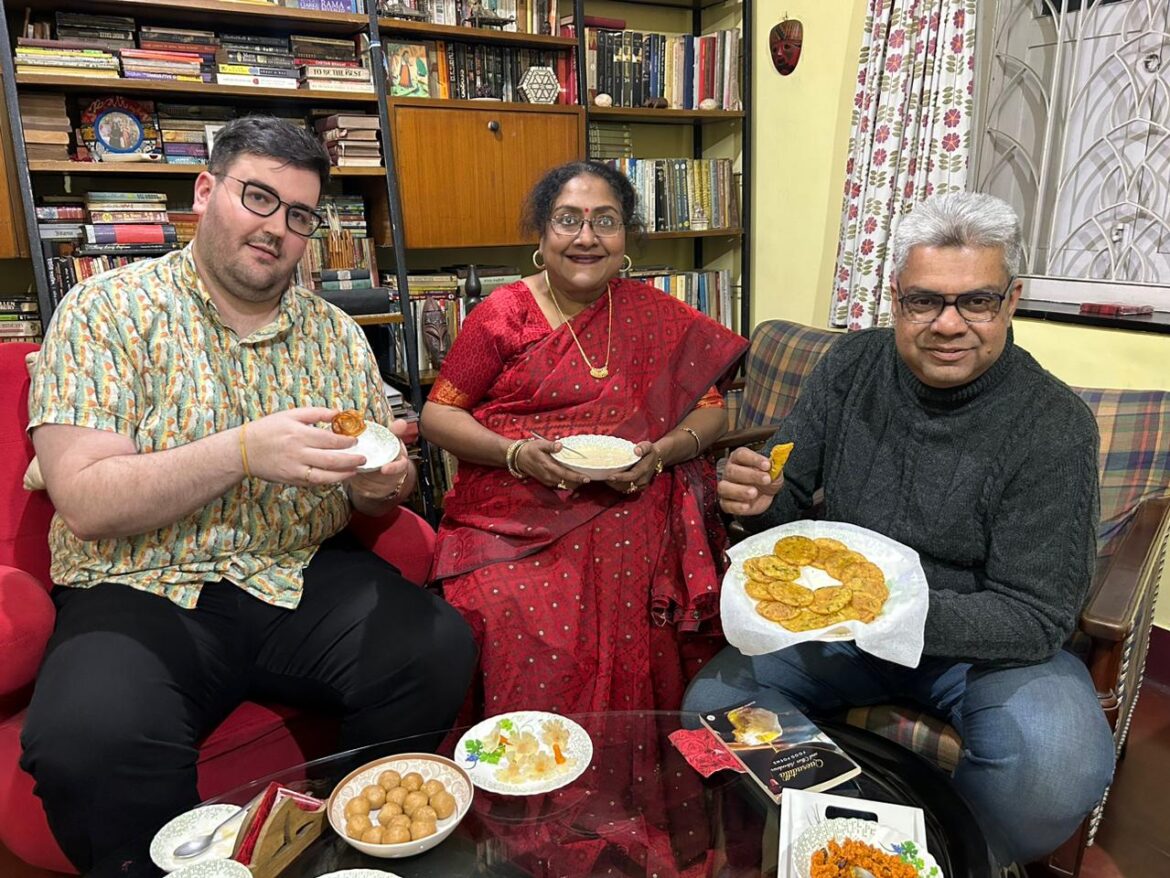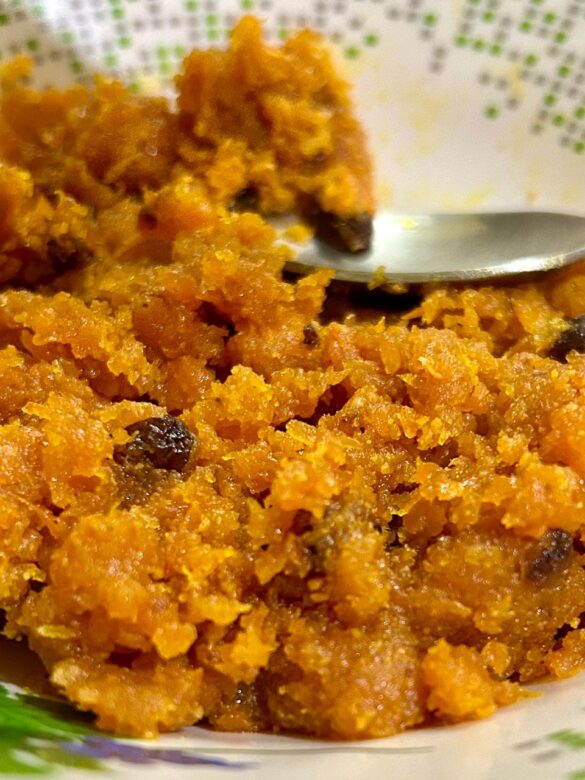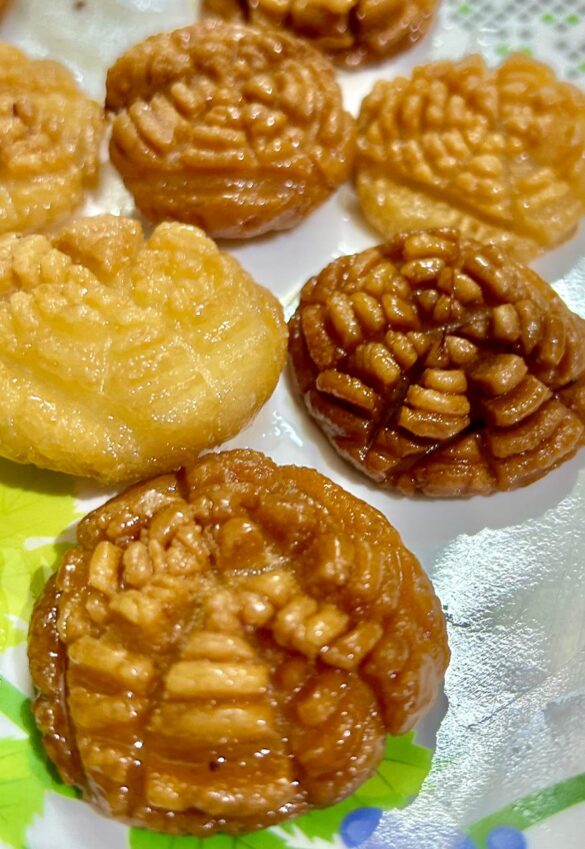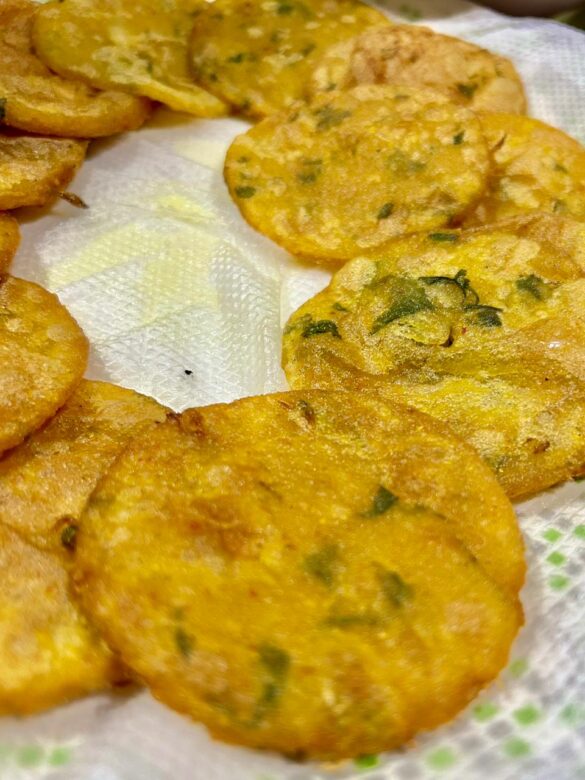Bengal, a land rich in culture and tradition, is not only known for its vibrant festivals and literature but also its delectable cuisine. Among the many culinary delights that grace Bengali households, puli pithe stands out for its sweetness and significance during festive occasions. This blog post is all about the varieties of Pithe, created by Nayana Afroz.
Much before chhena was introduced, pitha was something that was used in pujas and holy functions- avoiding the curdling of milk. And pitha has been mentioned in the medieval Bengali literatures- namely Mangal Kavya. Mostly, two kinds of rice are used- atap (sun dried) or Seddho (par-boiled).
Pithe, pronounced as “pit-hay,” is a traditional Bengali sweet dish made primarily during the winter months, especially during Poush Parbon and Makar Sankranti. These sweets hold a special place in Bengali households. In the heart of Bengal, lies an age-old practice of celebrating festivals with a myriad of delectable sweets. Among these, pithe holds a special place, bringing families together
Recently, I was invited by Nayana Di, a dear friend and culinary enthusiast, to partake in a unique tasting experience featuring different types of pithe from Bangladesh. Like a kid, I eagerly accepted the invitation, anticipating a journey filled with flavors and traditions. As I arrived at Nayana Di’s home, I was greeted by the aroma of spices and the warmth of hospitality. The table was full of a beautiful-looking pithe, each offering a tantalizing glimpse into the rich tapestry of Bengali cuisine. And there, I was, lost like a kid with the visual extravaganza.
Varieties of Bangladeshi Pithe
The first delight to tantalize my taste buds was Phool Pithe, looking like blooming flowers. Created from rice flour, coconut, and jaggery. Each bite of this intricately shaped treat offered a burst of sweetness and floral essence- awesome, I must say.
Next on the tasting menu was Golap Pithe, aptly named for its resemblance to a rose. It has layers of rice flour dough filled with a heavenly combination of sweet coconut and jaggery. And this one was something, about which, great things should be written about.
Seuli Pithe, with its mesmerizing spiral design, captivated both the eyes and the palate. Crispy on the outside and luxuriously soft on the inside, this pithe was a treat to just look at. Though it takes much time to prepare, it’s worth the effort.
And then, there was Nonta Pithe, a savory delight that stood out with its unique savory taste. Made from rice batter, this unconventional pithe offered a refreshing departure from the sweetness of its counterparts. And it left a lingering, tantalizing sensation on my taste buds.
In Bengali culture, Pithe Puli plays a crucial role in weddings and haldi ceremonies in Bangladesh. These traditional sweets are not only cherished delicacies but also integral parts of ceremonial rituals, symbolizing prosperity, happiness, and the bonding of families. During wedding ceremonies, Pithe Puli is often exchanged between the bride and groom’s families as a gesture of goodwill and acceptance. Similarly, during haldi ceremonies, these sweets are served to guests as a symbol of auspiciousness and blessings for the couple. Beyond their delectable taste, Pithe Puli holds deep cultural significance, uniting individuals and communities in celebration and tradition, making them an indispensable element of Bengali weddings and festivities in Bangladesh.
All good things must come to an end, and so we had to finish. Nayana Di’s hospitality and passion for traditional cooking made this culinary adventure unforgettable. Food- the unquestionable leveler, is the final hero (or the heroine) here. Please check the video below, if you’re looking for a visual treat.
And for the Makar Sankranti from Epar Bangla, do check the blog post here…
Bon appetite!!!
Let’s connect at indrajit.lahiri@ymail.com
This blogpost is written with the help of Priya ghosh






1 comment
[…] Sweets of Bengal: nokshi Pithe […]